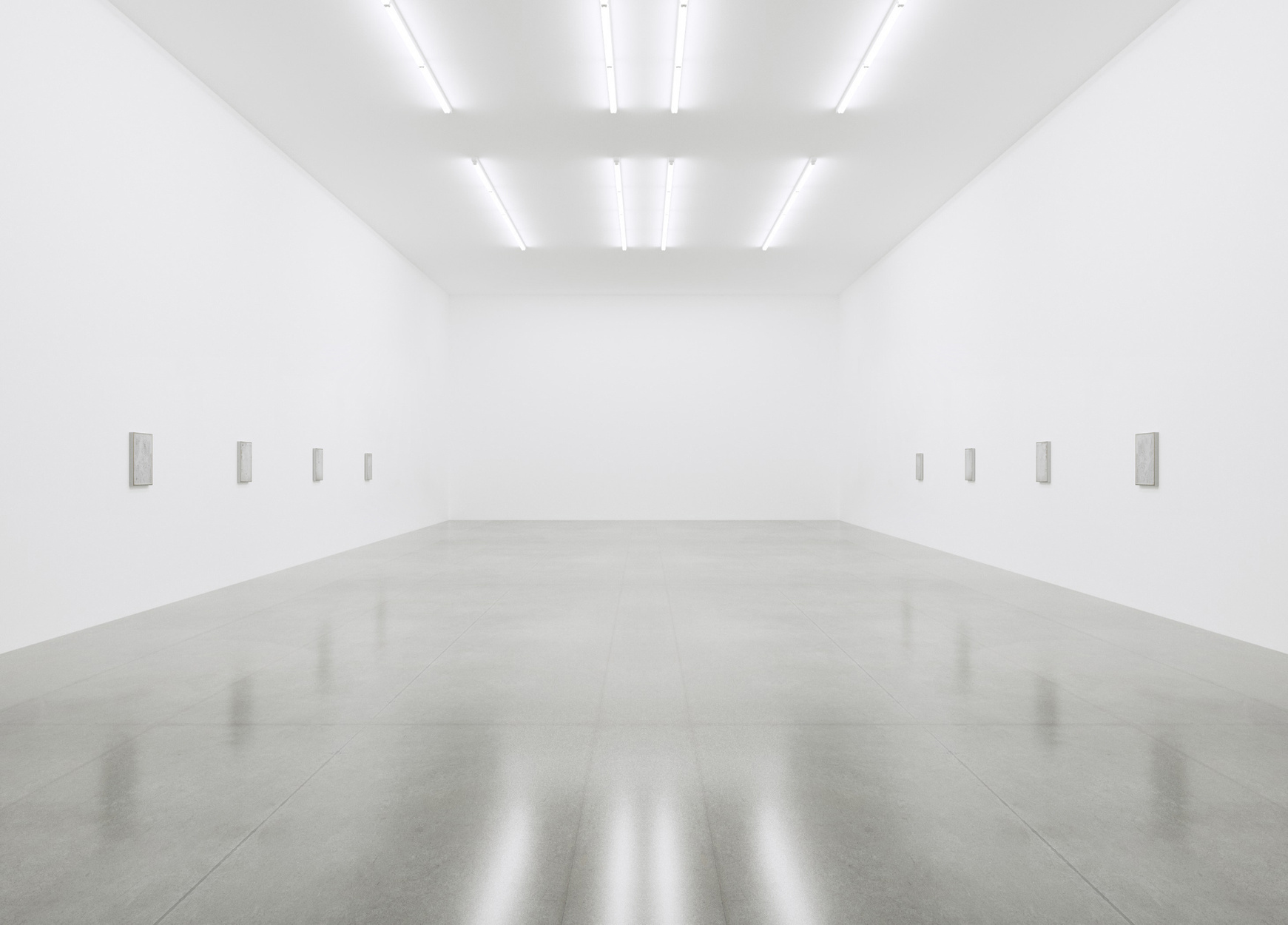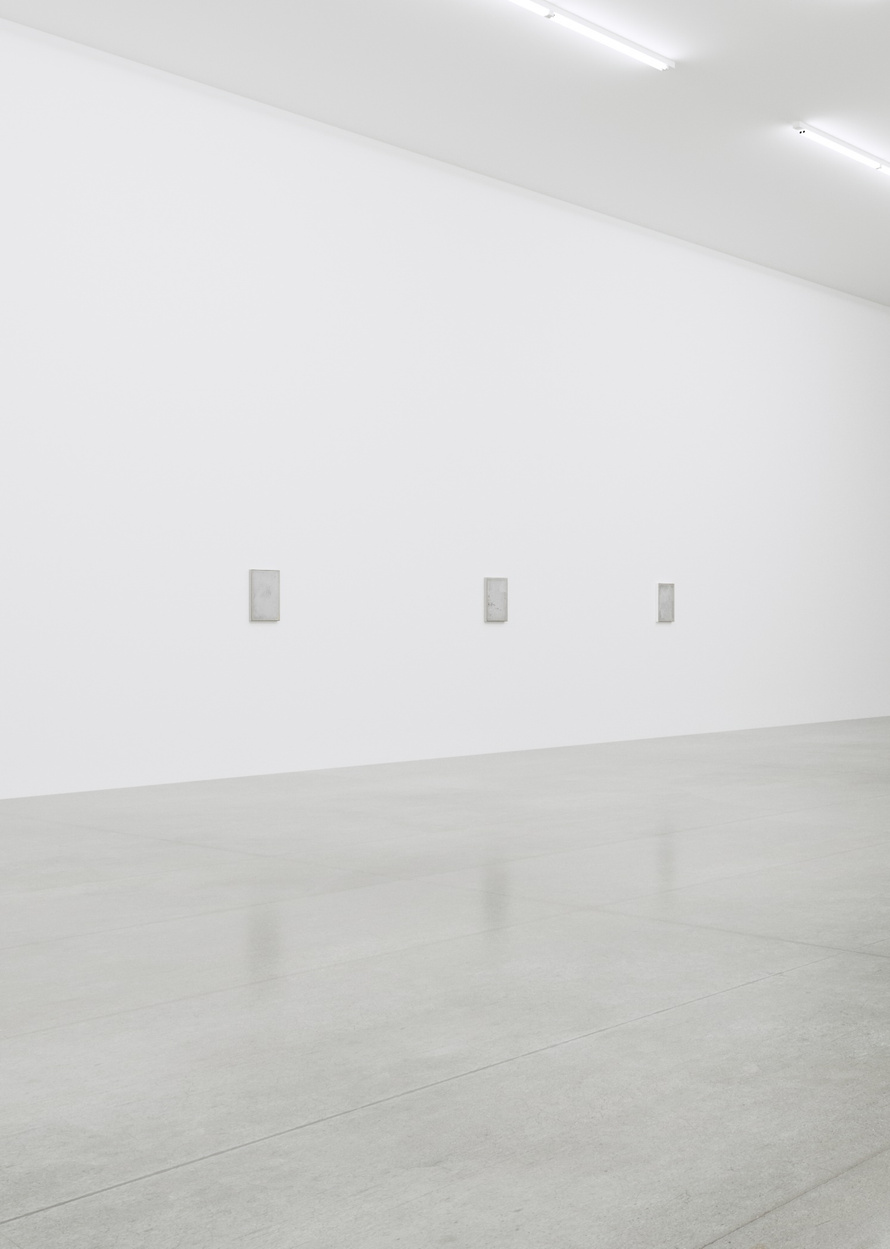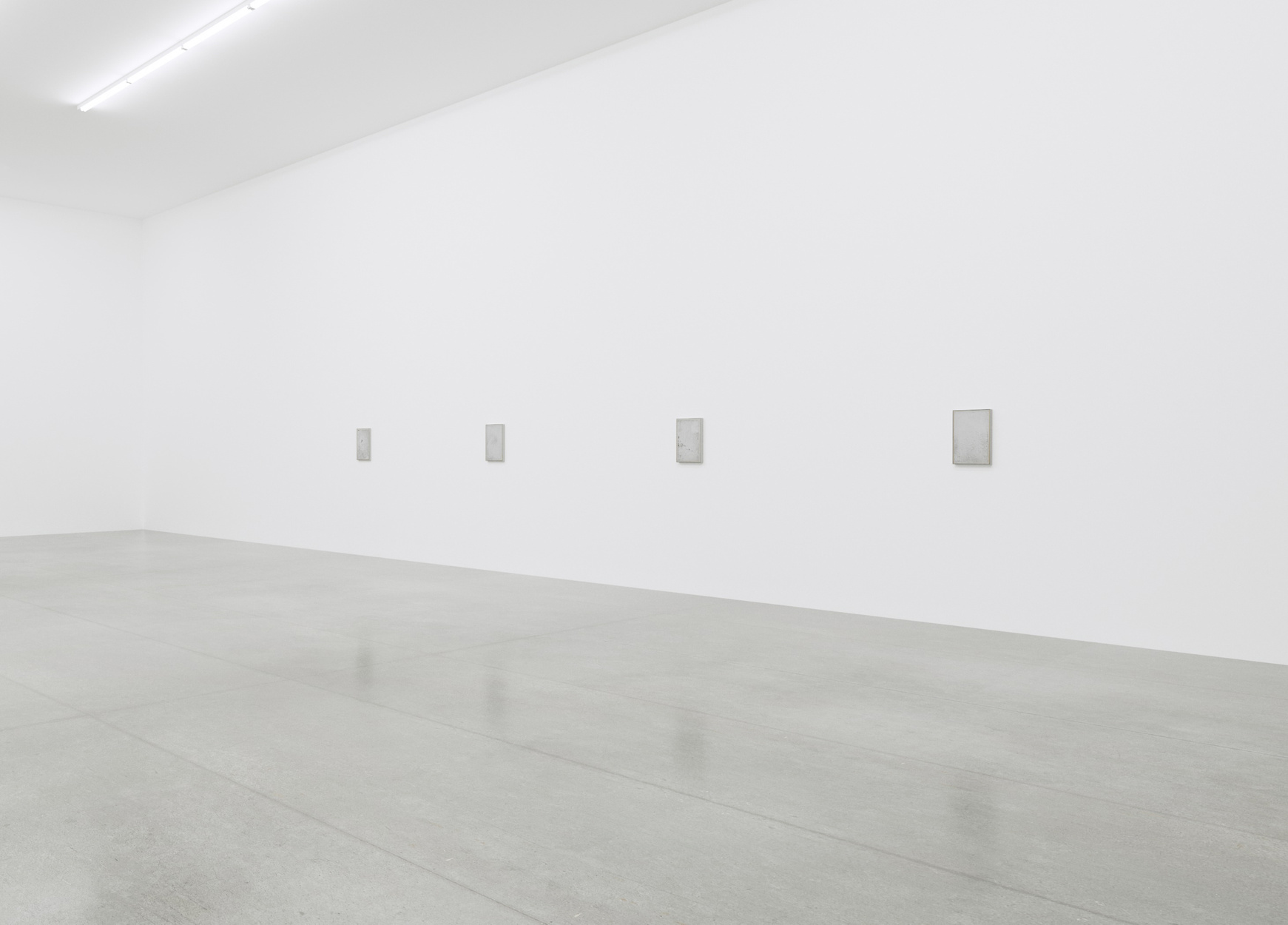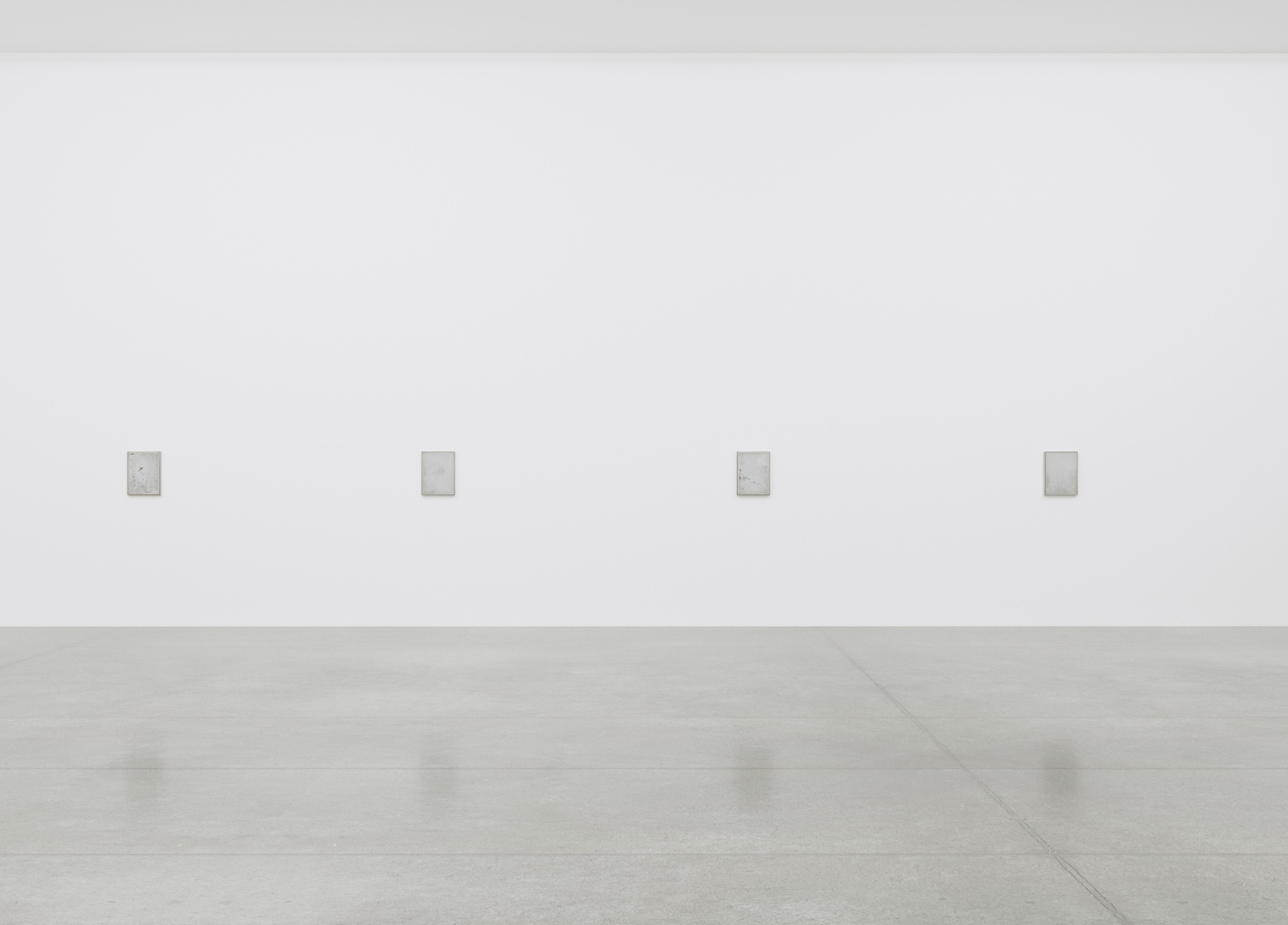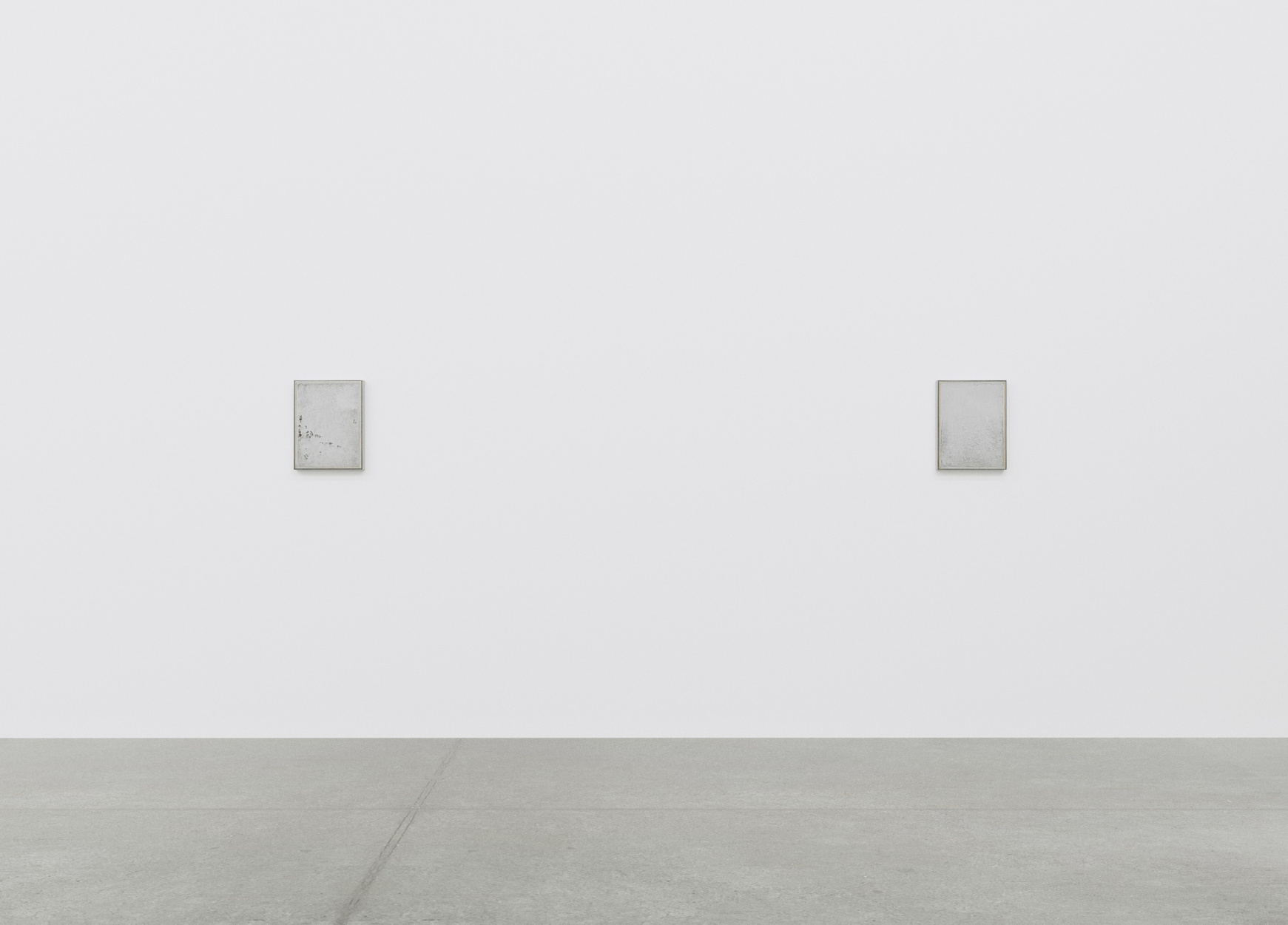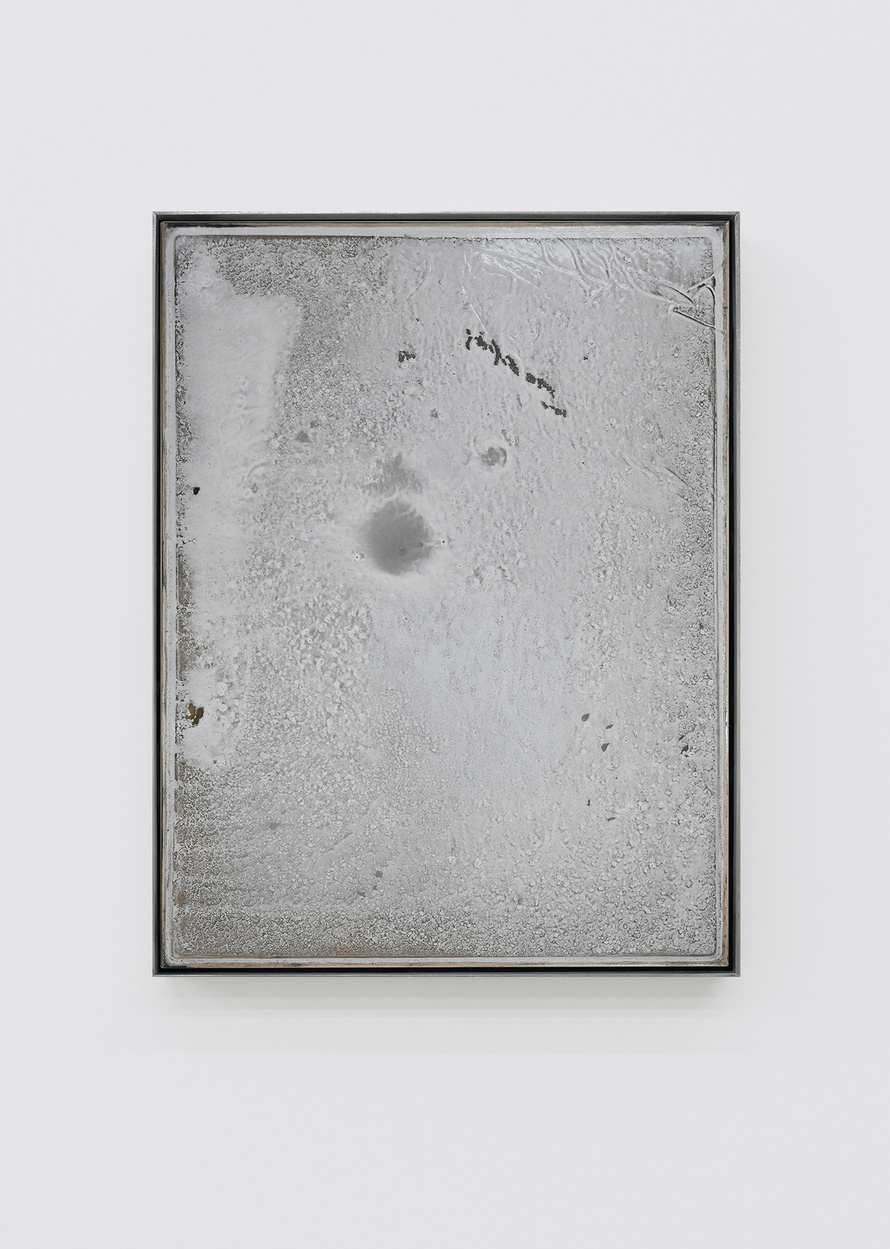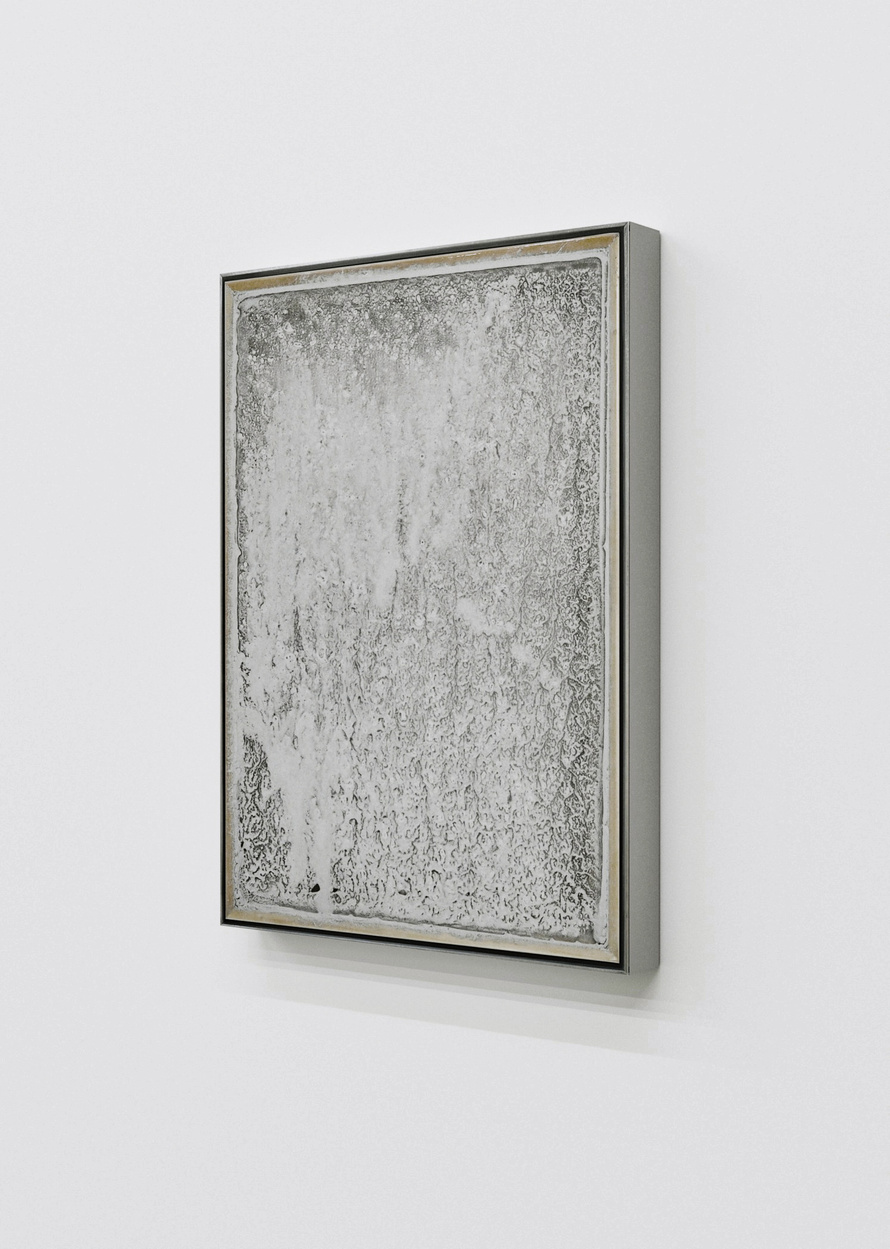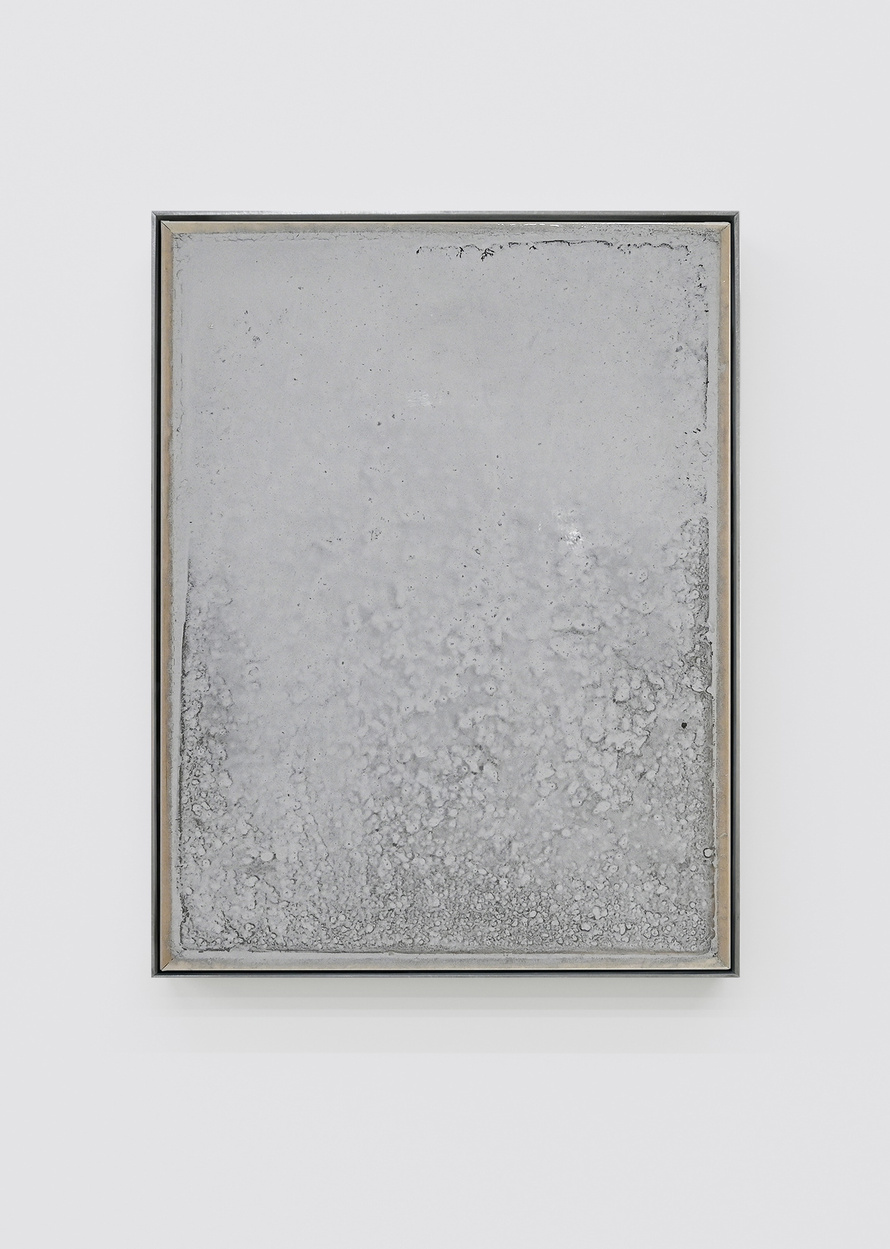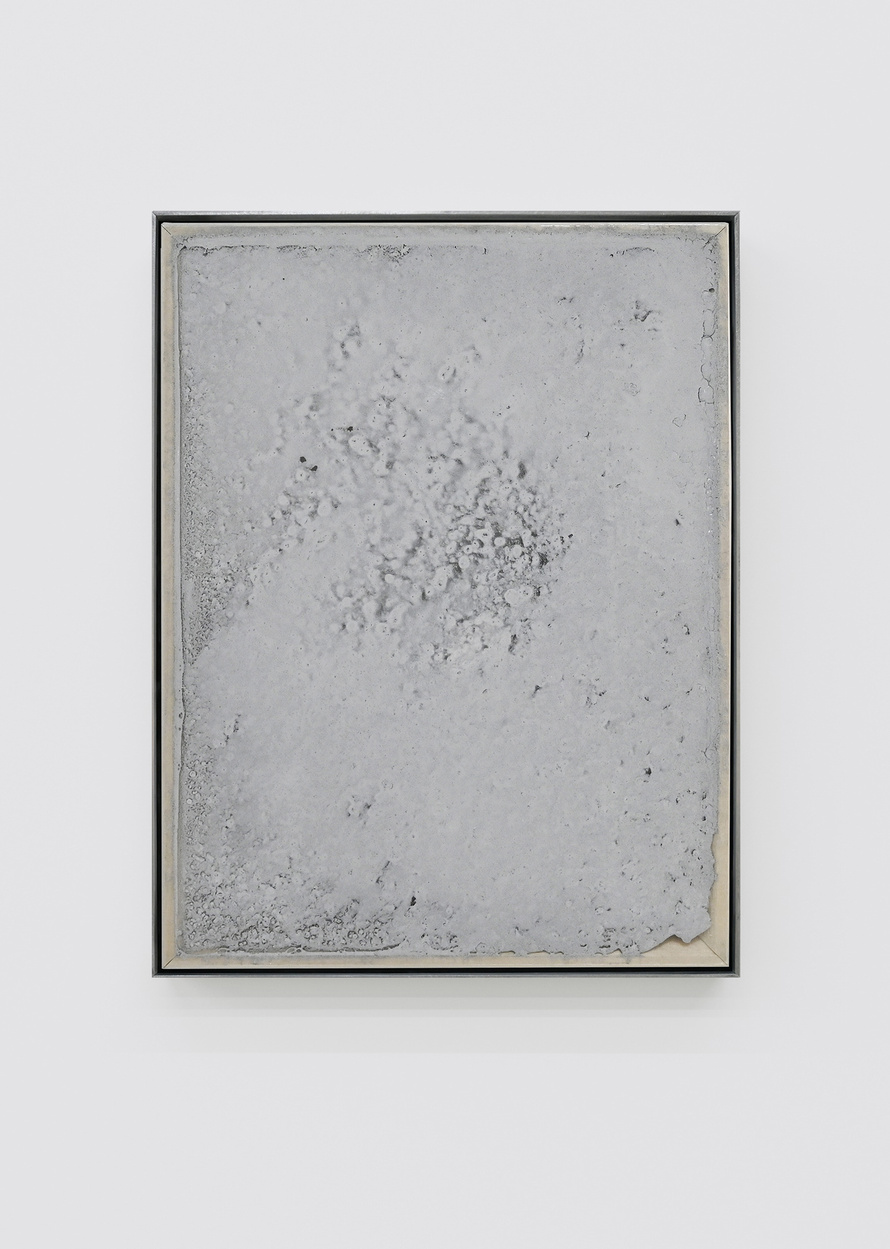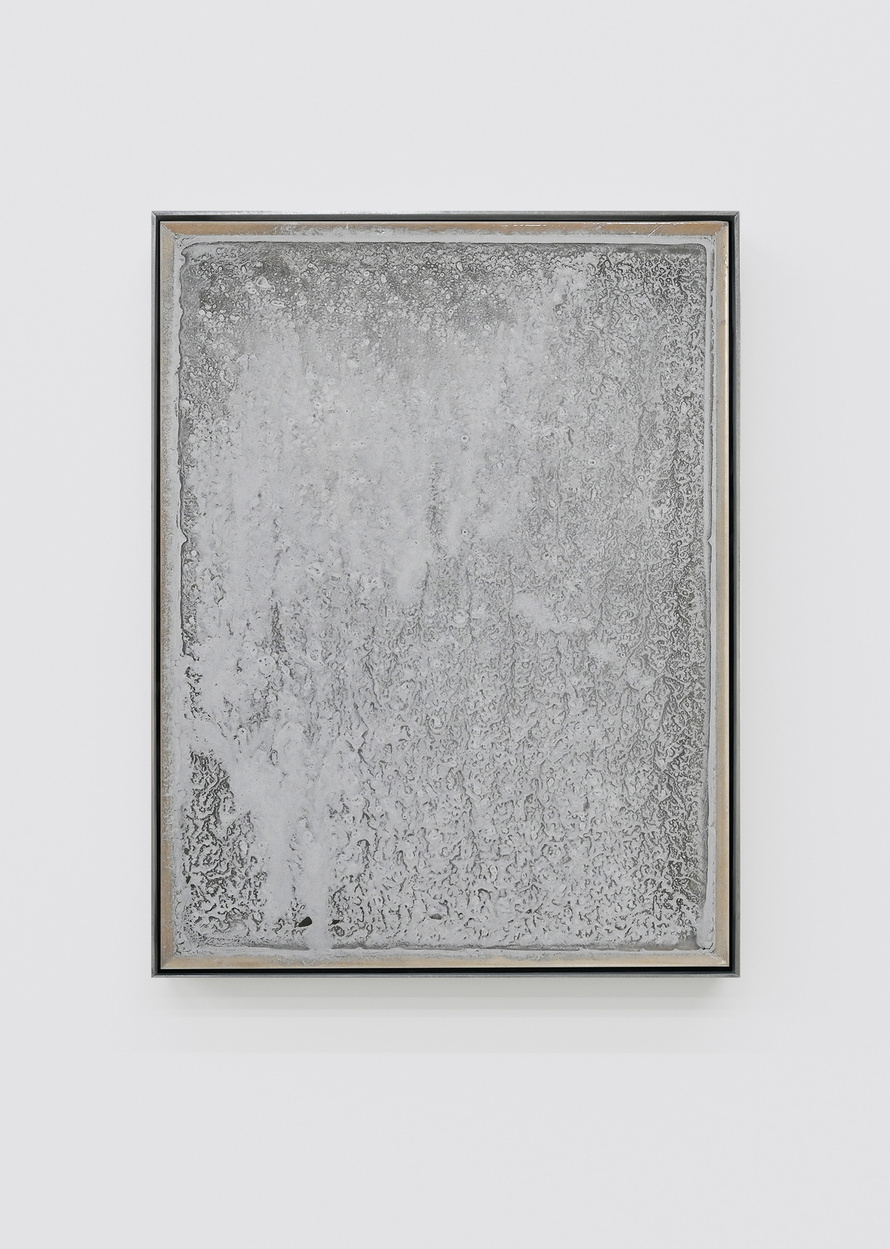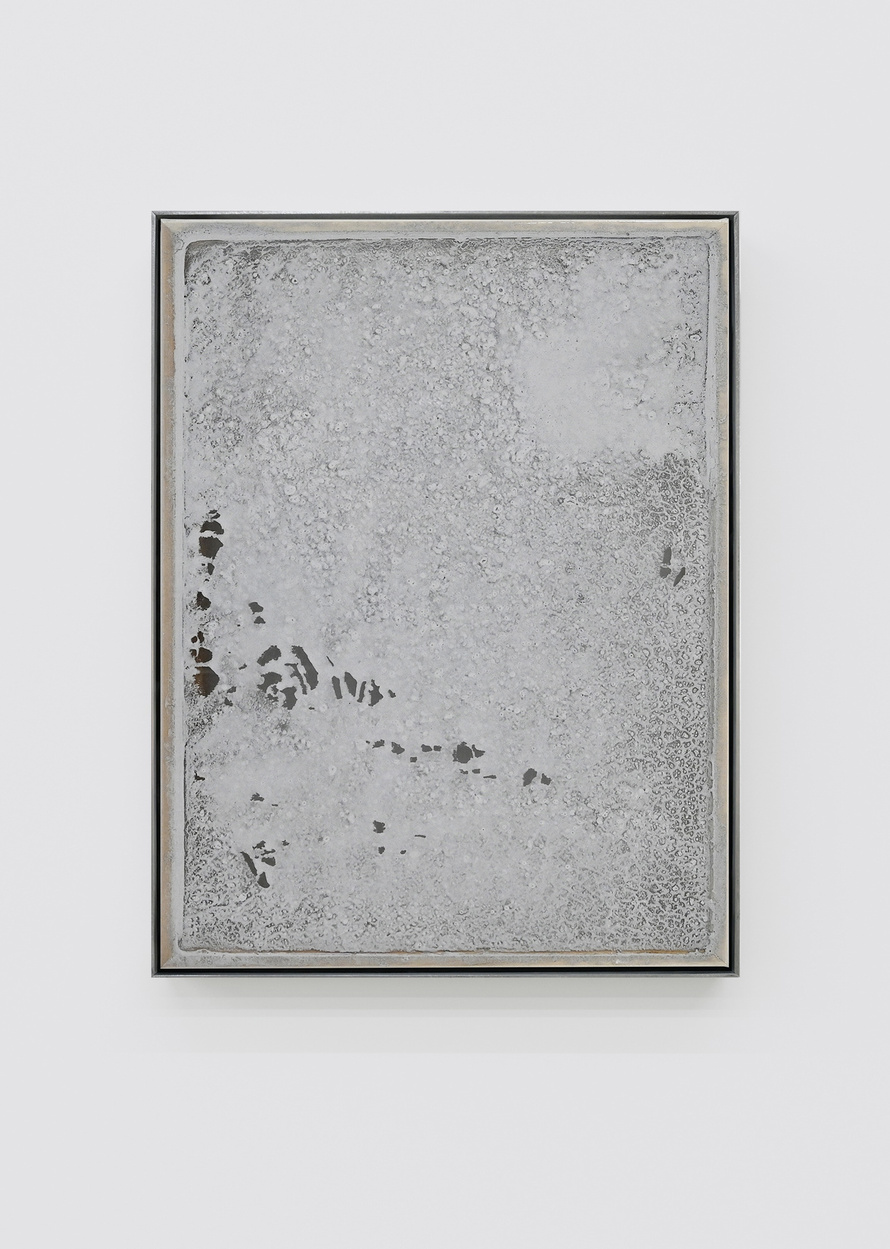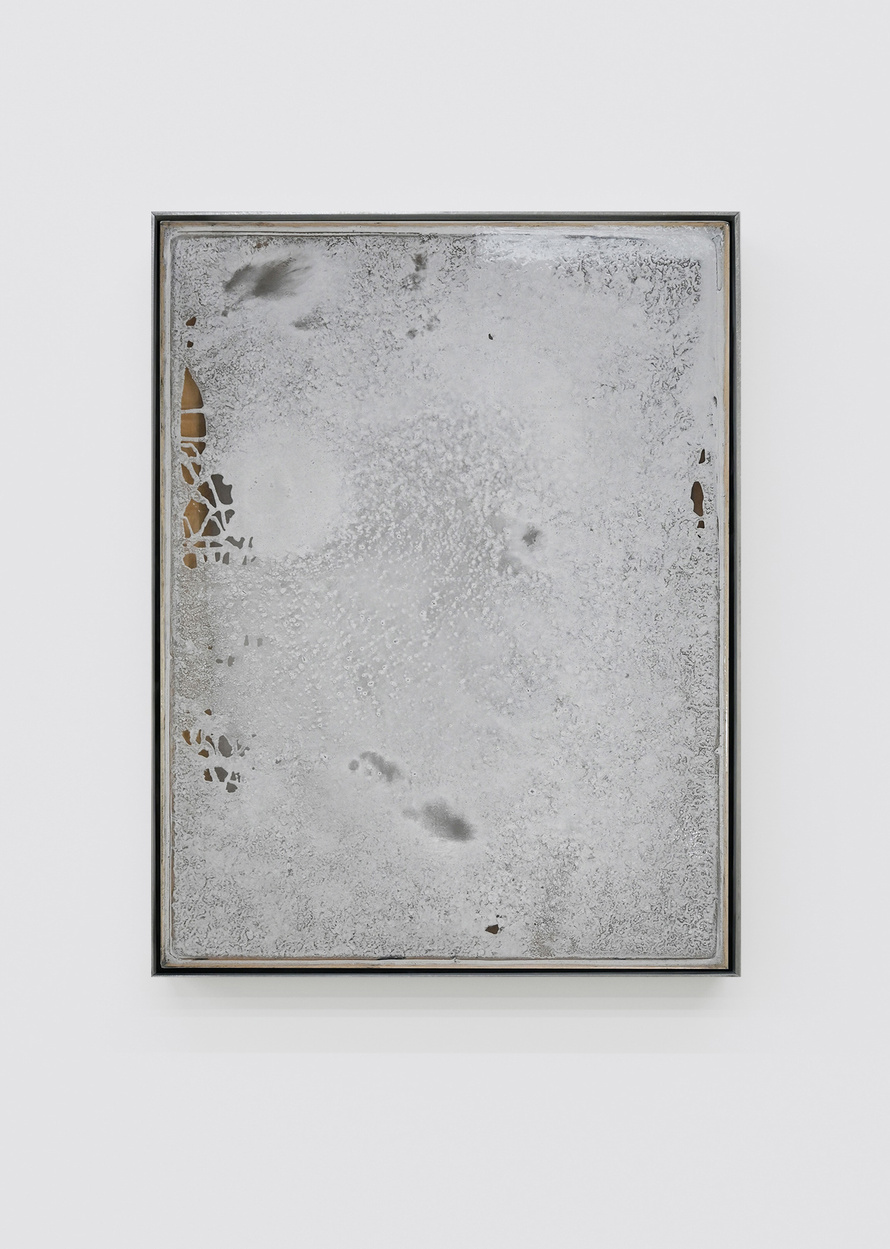In Seven Sites on view at FORM in Amsterdam, S. Mercure advances a practice that treats exhibition spaces not as inert containers but as porous, material entities.
The project draws from a year-long investigation into extraction—an ongoing experiment in making artworks from the literal substance of the places that host them. The result is a set of works that, while undeniably paintings, also function as micro-architectures of memory and matter.
The artist’s process reads almost like forensic fieldwork. Across six contemporary art venues, Mercure sanded minute layers from wall surfaces, collecting a fine powder, and siphoned ambient moisture from the air with a dehumidifier. These unlikely harvests—dust and water—were blended into a composite liquid pigment. The transformation is alchemical yet resolutely indexical: each finished work contains the particulate DNA of six distinct institutional bodies.
Presented on stretched PVC membranes, the paintings have a translucent fragility, as if suspended between states. The pigment dries in uneven rhythms, producing faint topographies of sediment and stain. In some works, a pale crust traces the slow retreat of water; in others, the granular residue reads like a weather map of the vanished spaces. They are, in effect, palimpsests in which the absence of origin sites is made visible through the very material that once belonged to them.
The titular “seventh site” is the gallery itself—FORM—which, crucially, did not contribute to the material pool. This curatorial omission creates a charged displacement. Here, the paintings return to the archetype of the white cube, but as carriers of other architectures, other climates. In occupying the gallery without being of it, they trouble the fantasy of spatial neutrality, positioning FORM as a site of reception and estrangement rather than genesis.
By layering physical remnants from multiple spaces within a single surface, Mercure creates an ecology of overlapping pasts. The works become temporal and spatial composites, confronting viewers with a condensed geography of art institutions. In this sense, Seven Sites is not a narrative of origin but of circulation: matter migrates, identities blur, and the boundaries between places erode into a shared, volatile surface.
If the project began with an interest in the invisible—dust in air, moisture in walls—it ultimately reveals how even the most intangible residues carry the weight of site-specific histories. In a moment when art spaces are increasingly interchangeable, Mercure insists on the stubborn particularity of place, even when reduced to a handful of dust and a jar of water.

